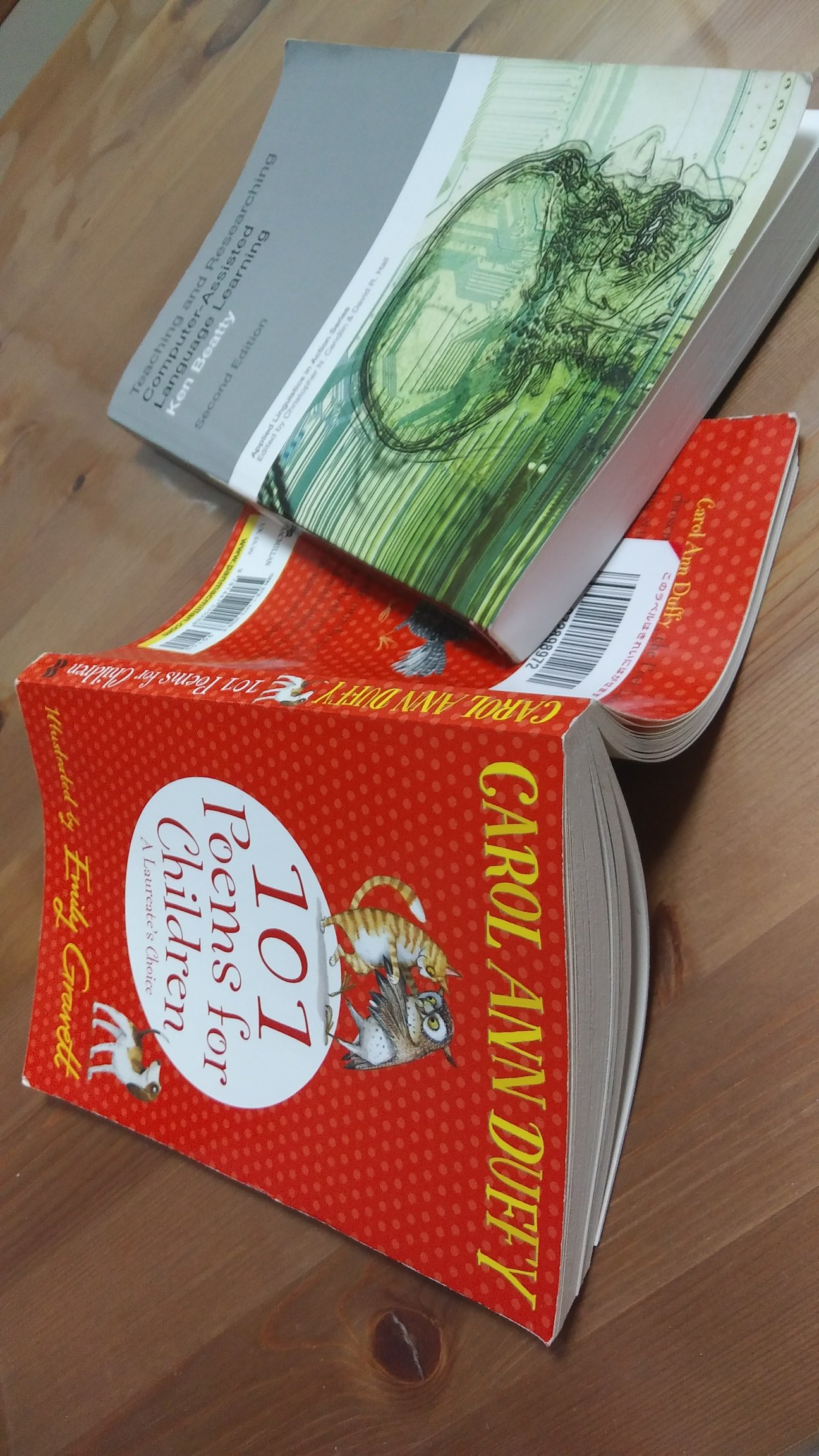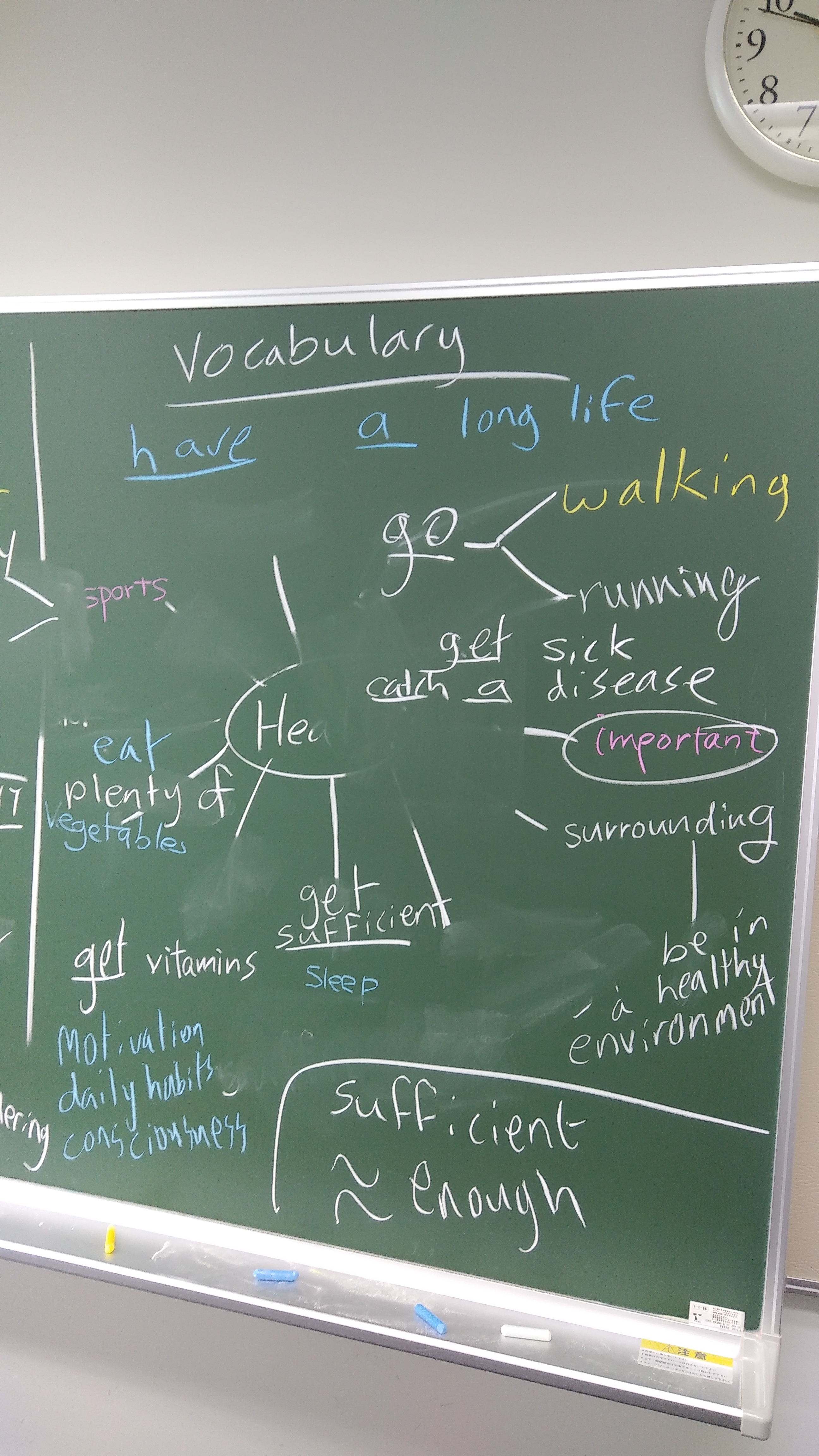
It’s been a good long while since I started this blog and in the meantime I have finished a Trinity DipTESOL and am close to finishing a MA Applied Linguistics & TESOL with Portsmouth University. My Dip was great for the phonology stuff I picked up, and OK for teaching practice (Trinity don’t let you use strong CLT approaches like Dogme or Task-Based Language Teaching with a Focus on Form. You are supposed to teach discrete language points). My MA has been great for access to ideas I might never have come across and, well, library access.
But next steps, Marc? Isn’t the title of this blog Freelance Teacher Self Development? It is. And there will be self-driven development. There are irons in fires and action research projects to fire up.
I have some bits and bobs to send to journals, but I think it would be kind of interesting and perhaps useful for the field of language teaching to have a bit of teacher-based research for teachers, on the internet, gates open, widely participated in. I know peer-review is all the rage, but I think that if we make our mistakes in the open, people can see the limitations of what gets done as well as any merits, and so it’s less a case of the Emperor’s New Clothes but more that jumper that was under some others at the back of the drawer. It’s not something everyone would necessarily be all ‘Wow! Amazing!’ about but perhaps ‘I don’t know if this would work in my setting but nobody would die if anything ended up disappointing me.’ I am a born salesman, I know.
So, here’s the bit I am kind of thinking about: after logging five random lessons starting in October 2017 with the same class, did you teach intonation? Why (not)? If so, how (explanation of method, explicit, differentiated or whole class, etc.) Blog your stuff and we can make it big.
Marc, why intonation?
I like phonology a lot and I’m just finishing something that I needed to think about lot of segmental phonology so suprasegmental is almost a break.
Marc, I want to do something about something else.
That would be fantastic. Let me know because I would be super interested in reading about it.
This is such a stupid idea. People don’t have time.
Maybe. How about people who have the time and want to do it, do it?
Anyway, hit me up in the comments.
Category: Speaking
Using Photos of Yourself to Teach Vowel Quality
Happy Summer people. I’m procrastinating massively despite a massive marking pile and a dissertation to finish. This was something that came up as a bit of Focus on Form (reactive, explicit language work).
In Japanese /æ/ and /ʌ/ are basically allophonic. They are the same sound to my learners. They hear no difference. I’m too far from the original mistake through overused /æ/ but I had problems getting my students to see the difference between the two phonemes. Having the luxury of a phone, a computer and a projector…

/ʌ/

/æ/
A gormless face is optional. This could also work for /ɪ/ and /iː/, and /ʊ/ and /uː/.
Anyway, just an idea.
Learner Autonomy ought to be Awesome not Anomie
Ooh, Marc. Your classes always look like you give your students loads of freedom.
Yes, it does look that way but sometimes I still feel like I’m spoonfeeding. So today, I ditched my plan and tried an experiment.
To prepare for a discussion on health. I set stations that the learners would practice at.
- Vocabulary brainstorming at the board.
- Discussion planning.
- Fluency practice.
- Reading.
- Mini-discussion practice.
I suspected that the learners would just pick out single words. I later elicited collocations.

Or functional language planning. What can you say to open a discussion, control a discussion, agree, disagree politely, change the subject and end the discussion. Not amazing.
Teacher led choral, response drills, function drills. Popular with the learners but not my bag. Useful to an extent.
Read the handout then discuss it. Response task on the back. Reading has a gloss and few if any ‘hard’ words.
Set a task (actually part of the exit task). The post-task was to report to me three best balances of nutrition and taste for the discussion.
How did it go?
Well, I’d be lying if I said everything was amazing. The vocabulary was very successful with my morning classes, and OK with the afternoon class. The reading was basically spot on and the mini discussions went well. The discussion planning kind of sucked a bit. Some learners took over and derailed the activity and it took a while to get back on track.
All in all, not bad, though. I’ll probably try something similar again but I definitely want to tweak the language planning, perhaps with a handout. But that takes the autonomy away.
Travel Problems – a Dogme-ish lesson
In this post I’ll go over a bit of a Dogme-ish (and I say Dogme-ish because it’s kind of Task Based due to the syllabus that I knocked up based on the absolute lack of any definite needs for my university students other than ‘learn some English’). With that, I designed a bit of a travel-based task cycle, of which every lesson stands alone or links. This is the final one in the cycle and perhaps my favourite. This is a role-play lesson with a bit of a difference.
- Give out slips of paper. Tell students to each write one different foreign travel problem on the slips. They don’t need to worry about spelling very much because it’s not the point of the lesson. Take all slips in.
- Put students into groups of 4 or 5 (I’d say groups of 3 might be too much work for one person – you’ll be assigning rotating roles to the students). The rotating roles are speakers who role play each travel problem and two or three listeners who listen to all or some of the following:
- Grammatical accuracy;
- Lexical appropriacy;
- Pragmatic competence;
- Pronunciation;
- Communication strategies;
- Fluency;
- What they would do the same or do differently.
- Give the slips out, ensuring groups have as few duplicates as possible. Set the students to plan one role play (not script writing – focus on speech acts and reactivity) as a group for students 1 & 2 in the group to perform for 6 minutes. Then have students 1 & 2 perform the role play while 3 & 4 listen and then give feedback. Teacher monitors and takes notes.
- Focus on Form. Probably a good idea to cover things you noticed but the student listeners didn’t.
- All students planning again – 4 minutes this time. Students 2 & 3 perform, 1 & 4 listen then give feedback.
- Focus on Form.
- As previous planning and roleplaying but with 2 minutes planning. 3 & 4 perform, 1 & 2 listen.
- Focus on Form again.
- No planning. 1 & 4 perform, 2 & 3 listen and give feedback.
- Student groups pick the most successful role play. Teacher randomly (or not) selects pairs from each group to perform, gives feedback.
New Post Elsewhere
So, in spite of feeling sick as a bleeding parrot today, I have good news and good stuff for you to read.
So, over at the ITDi blog, there is a new issue up on Error Correction 2.0, with posts by Chris Mares, John Pfordresher and me. Chris and John talk about meaningful things , making correction nice meaningful, setting goals and such. I get on my high horse about the lack of focus on form regarding pronunciation, pragmatics and discourse awareness/analysis.
Pro-Nun See Haitian
 Ooh, hello phonology, aren’t you looking fine?
Ooh, hello phonology, aren’t you looking fine?
I was just having a bit of a think and thought of a couple of bits that I’ve been doing in classes.
Treating Epenthesis with Epenicillin
You know what? Can we (people teaching learners with mora-based L1s like Japanese) just chill and stop over-egging the minimal pairs pudding? /l/ and /r/ are undoubtedly important to practice but how abouto we try to stoppu our studentsu speakingu like Wario in Mario Kart?
How? Just having them come down on the end sounds (plosives especially but it happens a lot with fricatives and affricates at the end of words, too) and hold it there.
Marc, lunacy! You can’t hold plosives.
No, but you can bring the articulators to where the air is held before termination and then just stop it early. For the non-plosives, hold it and just stop.
The next stage on is to move from the stoppage to the first phoneme of the next word. Drill it a couple more times then drill the whole clause.
It’s not magic, it needs practice but if learners know they can speak without sounding choppy as hell it gives them a foundation for trying harder to avoid it and autonomous in remedying their epenthesis problems.
Where it’s /æt/
With some learners I’ve had lately, I’ve observed the ability to ‘speak fast’, albeit with some mangled vowels.
Harsh!
Not really. Speaking is for communication and if I, somebody with years of experience hearing non-standard pronunciation, can’t understand what’s been said then some actual teaching needs to happen.
This is popular with more playful students but just have students move their jaws from /æ/ to /e/ to /I/ to /i:/ and feel the difference in their mouths. To get a good schwa I go from /æ/ to /з:/ to /ə/ stressing (oh, the irony) that the schwa has no stress. Get a couple of words with the target sounds produced then drill short phrases and short clauses and you have the start of improved intelligibility.
Activity – Backchannel Bingo
Here’s a conversation analysis task for learners which might form baseline information for teaching ‘active listening’, backchannelling and body language. It was inspired by this post by Olya Sergeeva (hat tip to @eilymurphy) that I didn’t have time to implement fully so tweaked to my own needs.
Update (10 October 2016): There are two leveled sheets, one for elementary/pre-intermediate (MS Word or PDF) and one for intermediate levels and up (MS Word or PDF).
One student observes two or more students having a conversation about a given topic or one of their own choosing, checking the boxes each time one of the conversation events occurs. Use a set time for this; I’d say 3 minutes at least and certainly less than 10.
At the end, observing students report which boxes were not checked. This can then be taught/coached. You could collect the information from the sheets and repeat the activity after a certain number of classes to monitor improvement (or lack thereof).
I hope this is useful. If you do try it, let me know how it went in the comments.